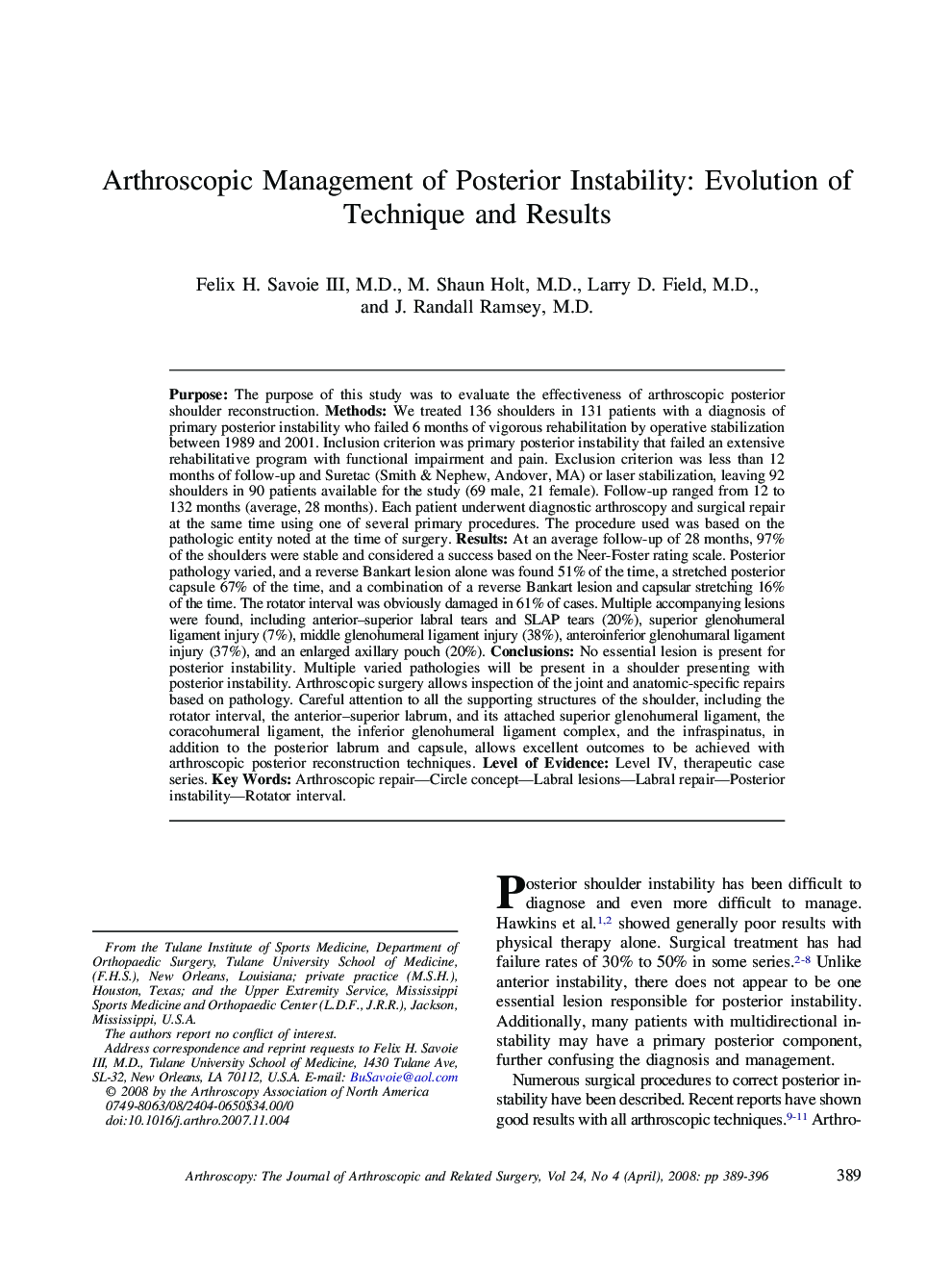| کد مقاله | کد نشریه | سال انتشار | مقاله انگلیسی | نسخه تمام متن |
|---|---|---|---|---|
| 4047023 | 1603586 | 2008 | 8 صفحه PDF | دانلود رایگان |

Purpose: The purpose of this study was to evaluate the effectiveness of arthroscopic posterior shoulder reconstruction. Methods: We treated 136 shoulders in 131 patients with a diagnosis of primary posterior instability who failed 6 months of vigorous rehabilitation by operative stabilization between 1989 and 2001. Inclusion criterion was primary posterior instability that failed an extensive rehabilitative program with functional impairment and pain. Exclusion criterion was less than 12 months of follow-up and Suretac (Smith & Nephew, Andover, MA) or laser stabilization, leaving 92 shoulders in 90 patients available for the study (69 male, 21 female). Follow-up ranged from 12 to 132 months (average, 28 months). Each patient underwent diagnostic arthroscopy and surgical repair at the same time using one of several primary procedures. The procedure used was based on the pathologic entity noted at the time of surgery. Results: At an average follow-up of 28 months, 97% of the shoulders were stable and considered a success based on the Neer-Foster rating scale. Posterior pathology varied, and a reverse Bankart lesion alone was found 51% of the time, a stretched posterior capsule 67% of the time, and a combination of a reverse Bankart lesion and capsular stretching 16% of the time. The rotator interval was obviously damaged in 61% of cases. Multiple accompanying lesions were found, including anterior–superior labral tears and SLAP tears (20%), superior glenohumeral ligament injury (7%), middle glenohumeral ligament injury (38%), anteroinferior glenohumaral ligament injury (37%), and an enlarged axillary pouch (20%). Conclusions: No essential lesion is present for posterior instability. Multiple varied pathologies will be present in a shoulder presenting with posterior instability. Arthroscopic surgery allows inspection of the joint and anatomic-specific repairs based on pathology. Careful attention to all the supporting structures of the shoulder, including the rotator interval, the anterior–superior labrum, and its attached superior glenohumeral ligament, the coracohumeral ligament, the inferior glenohumeral ligament complex, and the infraspinatus, in addition to the posterior labrum and capsule, allows excellent outcomes to be achieved with arthroscopic posterior reconstruction techniques. Level of Evidence: Level IV, therapeutic case series.
Journal: Arthroscopy: The Journal of Arthroscopic & Related Surgery - Volume 24, Issue 4, April 2008, Pages 389–396